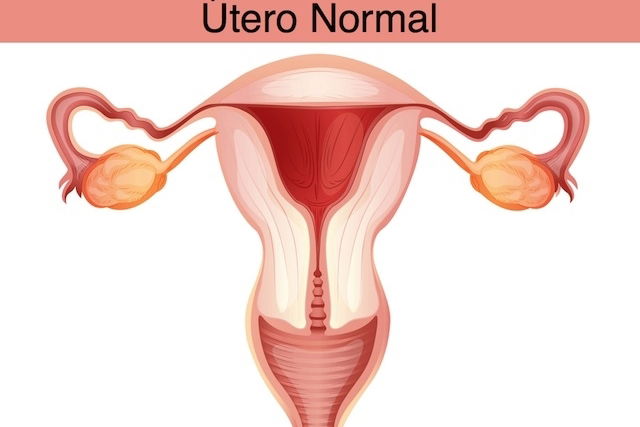adenomiose difusa o que é Quem tem adenomiose pode engravidar?
Adenomyosis is a common yet often misunderstood medical condition that affects many women worldwide. It is a condition that occurs when the tissue that normally lines the uterus, known as the endometrium, starts to grow within the muscle wall of the uterus. This abnormal growth can lead to a range of symptoms and may require medical intervention for effective management.
Understanding Adenomyosis
Adenomyosis is often referred to as a “sister” condition to endometriosis, as they both involve the growth of endometrial-like tissue in abnormal locations within the reproductive system. While endometriosis refers to the presence of this tissue outside the uterus, adenomyosis specifically involves the tissue growing within the muscular walls of the uterus.
The exact cause of adenomyosis is still unknown, but researchers believe that it may be influenced by hormonal imbalances or changes in estrogen levels. It primarily affects women who are in their reproductive years, typically between the ages of 40 and 50, and those who have had multiple pregnancies or uterine surgeries.
Recognizing the Symptoms
Adenomyosis can present with a variety of symptoms, although some women may not experience any symptoms at all. Common signs include prolonged and heavy menstrual bleeding, severe menstrual cramps, pelvic pain, and pressure in the lower abdomen. Many women also report bloating and a feeling of fullness, as well as pain during sexual intercourse.
Due to the similarity of symptoms with other conditions, such as uterine fibroids or endometriosis, adenomyosis can often be misdiagnosed or overlooked. If you are experiencing any of these symptoms, it is crucial to seek medical advice and undergo proper diagnostic tests.
Diagnosis and Treatment Options
If your healthcare provider suspects adenomyosis, they may use a combination of methods to confirm the diagnosis. These can include a pelvic exam, imaging tests such as an ultrasound or MRI, or even a minimally invasive procedure called a hysteroscopy.
Once diagnosed, the treatment for adenomyosis depends on the severity of symptoms and the individual’s reproductive plans. Conservative treatments may involve pain management through over-the-counter or prescription medications. Hormonal therapies, such as birth control pills or hormonal intrauterine devices, may also be prescribed to help alleviate symptoms.
In more severe cases, surgery may be necessary. The most common surgical option for adenomyosis is a hysterectomy, which involves the removal of the uterus. This is usually recommended if the symptoms are severe, if there is significant enlargement of the uterus, or if conservative treatments have been ineffective.
Living with Adenomyosis
Managing adenomyosis can be challenging, but there are steps you can take to improve your quality of life. To help reduce symptoms, it is recommended to maintain a healthy lifestyle, including regular exercise, a balanced diet, and stress management techniques. Additionally, applying heat to the abdominal area and taking over-the-counter pain relievers may provide temporary relief.
It is important to consult with your healthcare provider about the best treatment options for your specific situation. They will be able to provide guidance and support throughout your journey with adenomyosis. Remember, you are not alone, and there are many resources available to help you navigate this condition.
Conclusion
Adenomyosis is a complex and often misunderstood condition that affects many women. It involves the growth of endometrial-like tissue within the muscular walls of the uterus, leading to a range of symptoms and potential complications. While there is no known cure for adenomyosis, effective management options are available to help women live comfortable and fulfilling lives.
If you suspect you may be suffering from adenomyosis, it is important to seek professional medical advice. Early diagnosis and proper treatment can make a significant difference in managing symptoms and improving overall well-being.

Image 1: Adenomiose | Dra. Fernanda Valente | Reprodução Humana SP
This image depicts the different types of adenomyosis, providing visual insights into the condition.

Image 2: Adenomiose: o que é, sintomas e possíveis causas - Tua Saúde
This image provides further understanding about adenomyosis, including its symptoms and potential causes.
If you are searching about Adenomiose | Dra. Fernanda Valente | Reprodução Humana SP you’ve visit to the right place. We have 5 Pics about Adenomiose | Dra. Fernanda Valente | Reprodução Humana SP like » Adenomiose: conheça os sintomas, Quem tem adenomiose pode engravidar? - Clinifert and also Adenomiose | Dra. Fernanda Valente | Reprodução Humana SP. Here you go:
Adenomiose | Dra. Fernanda Valente | Reprodução Humana SP
 fernandavalente.com.br» Adenomiose: Conheça Os Sintomas
fernandavalente.com.br» Adenomiose: Conheça Os Sintomas
 origen.com.brAdenomiose: O Que é, Sintomas E Possíveis Causas - Tua Saúde
origen.com.brAdenomiose: O Que é, Sintomas E Possíveis Causas - Tua Saúde
 www.tuasaude.comQuem Tem Adenomiose Pode Engravidar? - Clinifert
www.tuasaude.comQuem Tem Adenomiose Pode Engravidar? - Clinifert
 clinifert.com.bradenomiose engravidar quem
clinifert.com.bradenomiose engravidar quem
Adenomiose: O Que é, Sintomas, Causas E Tratamentos
 www.bloggraodegente.com.brAdenomiose: o que é, sintomas e possíveis causas. Adenomiose: o que é, sintomas, causas e tratamentos. Quem tem adenomiose pode engravidar?
www.bloggraodegente.com.brAdenomiose: o que é, sintomas e possíveis causas. Adenomiose: o que é, sintomas, causas e tratamentos. Quem tem adenomiose pode engravidar?